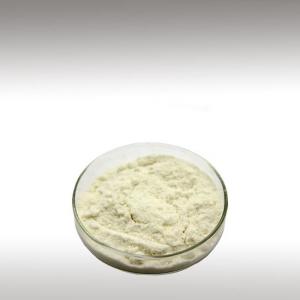
SILK PEPTIDE POWDER (HYDROLYZED SILK) - INGREDIENTS

BASE / GENERAL DATA
Information submited: March 30, 2016 Modified: June 4, 2018 By: OperaDreamhouse
Silk proteins are usually produced within specialized glands in these animals after biosynthesis in epithelial cells that line the glands, followed by secretion into the lumen of the gland prior to spinning into fibers. Silkworm Silk has been used commercially as biomedical sutures for decades and in textile production for centuries.
Silk is a natural Protein fiber, some forms of which can be woven into textiles. The Protein fiber of Silk is composed mainly of fibroin and is produced by certain insect larvae to formcocoons.
Silk is a natural Protein fiber, some forms of which can be woven into textiles. The Protein fiber of Silk is composed mainly of fibroin and is produced by certain insect larvae to formcocoons.
The best - known Silk is obtained from the cocoons of the larvae of the Mulberry Silkworm Bombyx Mori reared in captivity. The shimmering appearance of Silk is due to the triangular prism - like structure of the Silk fibre, which allows Silk cloth to refract incoming light at different angles, thus producing different colors.
Silk Protein or Peptide comes from Silk fibers and is added to many beauty products. Produced by silkworms, water - soluble Silk Proteins are created through a chemical process called hydrolysis.
However, in practice, Silk Proteins are not very effective moisturizing ingredients. That’s because in their native form, they are very large molecules and they are not easy to incorporate into body washes or shampoos.
Silk Protein or Peptide comes from Silk fibers and is added to many beauty products. Produced by silkworms, water - soluble Silk Proteins are created through a chemical process called hydrolysis.
However, in practice, Silk Proteins are not very effective moisturizing ingredients. That’s because in their native form, they are very large molecules and they are not easy to incorporate into body washes or shampoos.
Companies that sell Silk Proteins have to break them down into smaller units that are more water soluble and therefore easier to work with.
This process of breaking big Proteins into smaller pieces is called “Hydrolysis”. The good side of this is hydrolyzed Proteins are easier to put into formulas. The bad side of this is, they aren’t very effective because making the molecules smaller causes them to lose much of their film forming properties.
Silkworm Silk from Bombyx Mori consists primarily of two Protein components, fibroin, the structural protein of Silk Fibers, and Sericins, the water - soluble glue -like Proteins that bind the Fibroin fibers together. Silk Fibroin consists of heavy and light chain polypeptides linked by a disulfide bond. Fibroin is the Protein of interest for biomedical materials and it has to be purified or extracted from the silkworm cocoon by removal of the Sericin.
Silk Proteins or Peptides come in powder or liquid forms. It has a low molecular weight, which allows it to be Water soluble and permeable. It’s available as a light yellow, transparent liquid or white powder. Silk is Water soluble, we should dissolving it into the Water.
Chemical structure:
It represents white, yellowish or off-white powder with characteristic odor, soluble in water and Alcohol, рН of 1% Water solution 4,0 - 7,0.
Silk emitted by the silkworm consists of two main proteins, Sericin and Fibroin, Fibroin being the structural center of the Silk, and Serecin being the sticky material surrounding it. Fibroin is made up of the amino acids Gly-Ser-Gly-Ala-Gly-Ala and forms beta pleated sheets. Hydrogen bonds form between chains, and side chains form above and below the plane of the hydrogen bond network.
The active components stipulating Silk Powder effect are amino acids and oligopeptides received by means of alkaline hydrolysis of Silk Proteins.
Silkworm Silk from Bombyx Mori consists primarily of two Protein components, fibroin, the structural protein of Silk Fibers, and Sericins, the water - soluble glue -like Proteins that bind the Fibroin fibers together. Silk Fibroin consists of heavy and light chain polypeptides linked by a disulfide bond. Fibroin is the Protein of interest for biomedical materials and it has to be purified or extracted from the silkworm cocoon by removal of the Sericin.
Silk Proteins or Peptides come in powder or liquid forms. It has a low molecular weight, which allows it to be Water soluble and permeable. It’s available as a light yellow, transparent liquid or white powder. Silk is Water soluble, we should dissolving it into the Water.
Chemical structure:
It represents white, yellowish or off-white powder with characteristic odor, soluble in water and Alcohol, рН of 1% Water solution 4,0 - 7,0.
Silk emitted by the silkworm consists of two main proteins, Sericin and Fibroin, Fibroin being the structural center of the Silk, and Serecin being the sticky material surrounding it. Fibroin is made up of the amino acids Gly-Ser-Gly-Ala-Gly-Ala and forms beta pleated sheets. Hydrogen bonds form between chains, and side chains form above and below the plane of the hydrogen bond network.
The active components stipulating Silk Powder effect are amino acids and oligopeptides received by means of alkaline hydrolysis of Silk Proteins.
Glycine, alanine and serine compose about 80% of amino - acid content of dry Silk Extracts. The sections with the following amino - acid sequence are characteristic for oligopeptides: Gly-Ala-GIy-AIa-GIy-Ser.
Silk is credited with the ability to retain 10,000 times its weight in Water, resulting in optimum conditioning and increased strength.
How to prepare a silk Liquid:
In hot Water pour a little Salt, then the liquid becomes clear, the powder is fully melted. In the market liquid Silk always is add Salt.
The production of the cream: slowly pour Silk Powder in the heated Water phase and well dissolved before connecting with the oil phase.
The production without heating: it must be a powder mix of heated water, add some Salt and then mixed with other ingredients.
If you have Silk Liquid then add a few drops in mixture after culminating it.
Store in a cool dry place.
Recommended Usage Level: 1 - 2.5%
Self life: 2 years.
Silk is credited with the ability to retain 10,000 times its weight in Water, resulting in optimum conditioning and increased strength.
How to prepare a silk Liquid:
In hot Water pour a little Salt, then the liquid becomes clear, the powder is fully melted. In the market liquid Silk always is add Salt.
The production of the cream: slowly pour Silk Powder in the heated Water phase and well dissolved before connecting with the oil phase.
The production without heating: it must be a powder mix of heated water, add some Salt and then mixed with other ingredients.
If you have Silk Liquid then add a few drops in mixture after culminating it.
Store in a cool dry place.
Recommended Usage Level: 1 - 2.5%
Self life: 2 years.

SPIRITUAL PRACTISES DATA

MEDICINE / HEALTH DATA
Information submited: March 30, 2016 Modified: June 4, 2018 By: OperaDreamhouse
Silk Proteins are easily absorbed by skin, possess perfect moisturizing properties, improve metabolism of corium and epidermis, take regulatory effect on melanin level, activate skin regeneration and promote healing of wounds, scars, possess wrinkle smoothing effect.
Silk is a natural Protein and a natural moisture management system, which is really neat.
Silk is a natural Protein and a natural moisture management system, which is really neat.
Its chemical composition is close to that of human skin and hair, meaning Silk helps damaged skin re - generate. Silk Proteins can help moisturize skin and smooth hair because hair and skin are also made of Protein and because Silk Proteins are large molecules we must have hydrolysis method.

BEAUTY / COSMETICS DATA
Information submited: March 30, 2016 Modified: June 4, 2018 By: OperaDreamhouse
Silk Protein, hydrolyzed will add luster, body, and manageability to hair when used in hair care preparations. As an amphoteric Protein, it is compatible with cationic, anionic, and non-ionic materials.
Another reason that Silk Proteins aren't very effective is that they won't stick to hair very well from a rinse out product (like a shampoo or a body wash.) There are special proteins (called quaternized Proteins) that are chemically modified so they'll stick to hair and skin better.
Another reason that Silk Proteins aren't very effective is that they won't stick to hair very well from a rinse out product (like a shampoo or a body wash.) There are special proteins (called quaternized Proteins) that are chemically modified so they'll stick to hair and skin better.

FOOD / COOKING DATA
Information submited: March 30, 2016 Modified: June 4, 2018 By: OperaDreamhouse
Silk Protein can be used as a food additive. It is food suplement.
COMMENTS
No comments.


